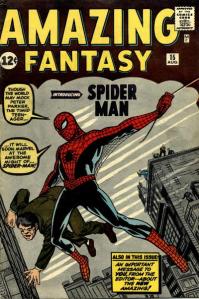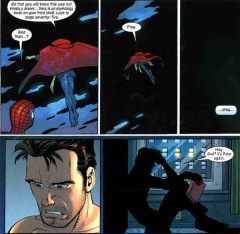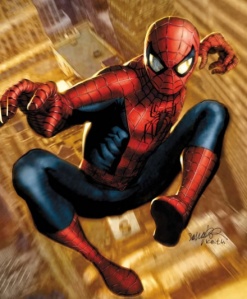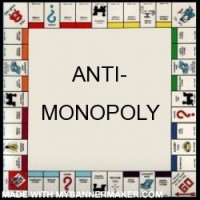As the world quickly shifts into the Digital Age, the subjects of copyright law and fair use become increasingly more important to discuss and understand. Information is spreading today at historically unmatched rates, so it is critical that the population knows what is and is not appropriate and legal use of copyrighted materials. By nature, copyright and fair use laws have many gray areas, with very few things being known for certain. Thus, I would like to unpack some of the specifics of the fair use doctrine, putting them in layman’s terms.
Situations involving fair use claims, by design, need to be considered on a case-by-case basis, because no two situations will ever be exactly the same. The U.S. Copyright Office outlines what have come to be known as the “Four Factors of Fair Use,” a set of considerations to make when determining if a particular usage of a work is indeed fair use. They are:
-
The purpose and character of the use, including whether such use is of commercial nature or is for nonprofit educational purposes
-
The nature of the copyrighted work
-
The amount and substantiality of the portion used in relation to the copyrighted work as a whole
-
The effect of the use upon the potential market for, or value of, the copyrighted work
To illustrate each of these Factors, I will discuss them a bit more in-depth.
Factor #1: Why is the work is being used? What is the purpose of using it? If I am using a copyrighted work, what is my goal? Consider these two hypothetical situations:
- I have decided to write a book. Instead of doing my own research, I explicitly copy someone else’s work and sell it as my own.
- I am a college professor. I distribute a short excerpt from a book to my students as assigned reading.
In the former case, one could convincingly argue that the money I made belongs to the original author of the work in question, for the ideas I used are his/hers, not mine. In the latter case, neither I, nor the larger school, would be making any money, but would instead be using the work for the promotion of education and social well-being. The second case would normally protected under the law, but as with all copyright issues, it is never black and white, as we will see.
Suppose that a high school hosted a movie night to raise money for the marching band, selling tickets for $5 each. The administration never got the permission of the film’s copyright holder because they felt that, since it was a school-sponsored event, they didn’t need to because they would be protected under fair use as an educational institution.
Suppose, also, that the film’s copyright holder learned about this event and decided to pursue legal action, because they felt the school was infringing their copyright by not paying due royalties. The copyright holder would have a solid case against the school. The school may be able to claim that, by providing money for the marching band, they are creating educational opportunities for students, but this argument would most likely not hold up in court.
In other words, just because someone borrows the copyrighted work of someone else does not mean that this use is automatically illegal. Similarly, just because a work is being used for an educational purpose does not mean it is automatically protected under the fair use doctrine.
Why is the work being used?
Factor #2: Are the means of expressing the idea(s) unique? What is the level of creativity and originality used in the work? According to copyright law, one cannot copyright facts. If I were writing a paper about the invention of the telephone, I would state that the first telephone was invented by Alexander Graham Bell in 1876. This is a known fact. I did not come up with the idea that the telephone was invented in 1876. It just was, and there are only so many ways to express this fact. As such, an author of a similar paper would not be able to claim that he came up with the idea of the telephone being invented in 1876 and that I stole his intellectual property. This fact is not the brainchild of either of us.
However, if this author had a specific means of expressing this idea, more so than simply stating it, this might be protected under copyright.
Perhaps the author wrote a poem about the invention of the telephone or painted a picture of Bell just after the completion of his invention. These methods of expression are unique, and they required a certain level of creativity to create. As a result, they are protected under copyright. To give another example, musicians Buddy Holly, Ritchie Valens, and J. P. Richardson died in an airplane crash in 1959. Since this is a historical fact, it cannot be copyrighted. However, musician Don McLean wrote the song “American Pie” about the event, and his work is under copyright because it is an original form of expression.
Are the means of expressing the idea(s) unique?
Factor #3: How much of the work is being used? Is it the “heart of the work” that is being used? This Factor is difficult to qualify. What is the “heart” of a certain work? Who gets to decide? If I were to copy the “Harry Potter” series verbatim, but change the name of the main character to “John,” this would clearly be infringement of copyright, because I would not really be changing anything of importance. I would be exactly copying J. K. Rowling’s ideas, and making only a slight cosmetic change that would have no impact on the narrative. However, if I were to write a piece of fanfiction that used the “Harry Potter” characters, but put them in a completely new setting with all new situations and adventures, would this be considered infringement? It is hard to say. I would be using Rowling’s ideas of characters, magic, etc., but one could argue that my work would be “transformative,” in which case it would be protected under fair use.
This factor is especially difficult. The amount and substantiality of the work used is hard to quantify, because each work is different. One common buzzword phrase surrounding fair use issues is “transformative work.” This is especially relevant here. A transformative work may be inspired by or based on an existing work, but it presents it differently enough that it is considered its own, freestanding work. As a musician, I like to sing songs written by other people. If I were to create a cover of a song and sell it, without the permission of the original artist, I would need to make sure it is unique enough to be considered transformative.
If I were to take an existing recording and make a minor change to it, such as adding one single piano note in Lennon’s “Imagine,” keeping everything else the same (such as Lennon’s voice, guitar riffs, lyrics, etc.), I would probably not be able to call this fair use. The work is still inherently the same, and the “heart” of the work has not been changed. However, if I were to create a cover of Sir Mix-a-Lot’s “Baby Got Back,” playing it as a piano ballad, this would probably be considered transformative. Yes, the lyrics would still be the same, but the song would have a completely different meaning. I would have changed it from a hip-hop song about objectifying women’s posteriors into a comedic love song. In this case, the heart of the work: its nature as a rap song, would be changed, and the work would probably be considered transformative.
How much of the work is being used? Is it the “heart of the work” that is being used?
Factor #4: What is the impact on the market? One of the primary reasons copyright exists is to make sure that creators of content receive due protection and profits for their work. In this day and age, media pirating is a hot topic of discussion. If I buy a CD, burn it, and give a copy to a friend, the artist and label only see the profits of one copy, despite the fact that two people have their product. Admittedly, the loss of revenue of one pirated CD would be next to nothing, but if this happens 10,000 times, there would be a significant market impact. (I know that piracy is a whole other issue, but it does illustrate the notion of market impact quite well.)
Even schools are not exempt from this consideration. Let’s say that a professor requires her class of 100 students to buy a certain textbook. Assuming every student buys the textbook (keep in mind, this is hypothetical), the author of the textbook would receive his share of the profits of 100 copies of his work. However, if this professor were to scan the entire textbook and put the file online for students to download, the author would see none of that profit, and would have essentially lost 100 potential buyers.
What is the impact on the market?
***Factor #5: Stanford University Libraries has an entire webpage devoted to copyright and fair use. They, too, outline the Four Factors, but they provide a “fifth factor,” that I find interesting:
When you review fair use cases, you may find that they sometimes contradict one another or conflict with the rules expressed in this chapter. Fair use involves subjective judgments and [is] often affected by factors such as a judge or jury’s personal sense of right or wrong. Despite the fact that the Supreme Court has indicated that offensiveness is not a fair use factor, you should be aware that a morally offended judge or jury may rationalize its decision against fair use.
While this is not a “real” factor, I felt it deserved a mention, because it gives interesting insight into the more “human” side of fair use, in which people’s personal beliefs may play into their opinions of something being fair use.
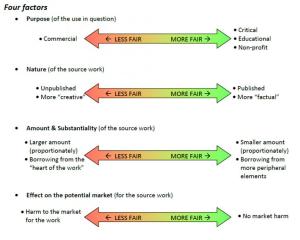
Image courtesy of Northeastern University
So, we have the four factors (I’m not considering the Stanford addition for this portion of this essay), each with their own unique considerations. To address a fair use claim, one must test out the factors individually. Does only one factor suggest fair use? Do all four of them suggest fair use? From these examinations, one can draw conclusions of if something actually falls under the category of fair use.
The system of fair use is imperfect at best. Each factor is intentionally created to avoid definitive, concrete rules, because each fair use case is unique and must therefore be considered on its own. What makes it even more difficult is that any given fair use case might have multiple, valid arguments for why something is or is not fair use. And what if two of the factors suggest fair use, and the other two do not? What then?
I do not claim to have any answers to these questions. I just hope to stress the importance of keeping them in mind. Fair use is generally a good system, as it both protects creators of content, but also encourages new creation of content.
With all this information, what is the take-away message? If you glean nothing else from reading this, please be aware that fair use, like much of copyright law, is not black and white. Very rarely is anything certain, and each case must be considered individually. In this, the Digital Age, be careful, and consider your usage of other people’s works.
Thank you for reading!
Discussion Questions:
1) What do you think are the major obstacles that prevent the spread of knowledge about fair use law?
2) Do you feel that most high school/college students have at least a rudimentary understanding of fair use? If not, what would help them to?
3) What role do you think libraries/repositories could play in spreading knowledge of fair use law?
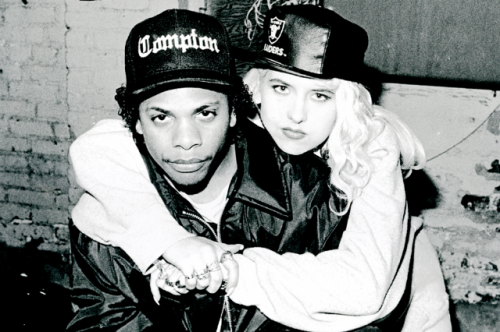


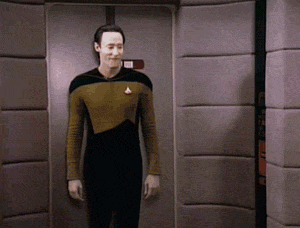
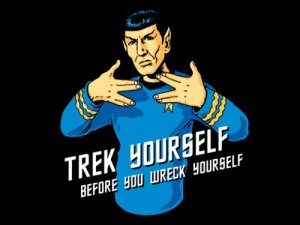
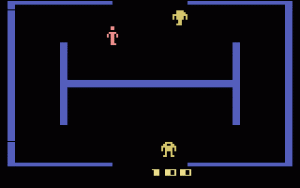


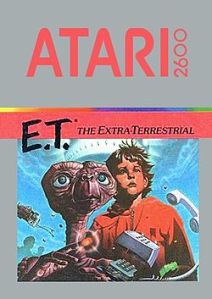



 guy’s estate, because his collection was too big to bring to them. What did he collect? Tractor seats. I couldn’t believe someone collected tractor seats, but I was even more surprised to learn that many people did, and there was actually a market for them. A similar feature on the Roadshow had someone who had collected corn things their entire life. Corn Flakes, corn toys (they exist), corn this, corn that. I must say, the collection was phenomenal. The fact that the collection was appraised for a large sum of money suggests that some (insert adjective here) person would drop some cash on this corny bonanza of a collection. Just about any item you could want to collect has a market. You just may not know it yet.
guy’s estate, because his collection was too big to bring to them. What did he collect? Tractor seats. I couldn’t believe someone collected tractor seats, but I was even more surprised to learn that many people did, and there was actually a market for them. A similar feature on the Roadshow had someone who had collected corn things their entire life. Corn Flakes, corn toys (they exist), corn this, corn that. I must say, the collection was phenomenal. The fact that the collection was appraised for a large sum of money suggests that some (insert adjective here) person would drop some cash on this corny bonanza of a collection. Just about any item you could want to collect has a market. You just may not know it yet. being said, it is a good idea to go on sites like eBay, Amazon, and even craigslist, just to get a sense of what certain items are selling for. So-called “market value” is determined by nothing more than what someone is willing to pay for an item. Baseball cards (*sigh,* yes, I collect those, too) are nothing more than pieces of color-printed cardstock. Why, then, does a Honus Wagner T-206 sell for seven digits? Because it has a market value that is off the proverbial chain. Yes, it has to do with condition, scarcity and availability, age, and a hundred other factors, but, at the end of the day, if no one wants to buy something, it’s market value is $0. Keeping up-to-date with market values will also help you not over-pay for a collectible when you see it for sale, and, by extension, help you know when you’re getting a good deal. On that note…
being said, it is a good idea to go on sites like eBay, Amazon, and even craigslist, just to get a sense of what certain items are selling for. So-called “market value” is determined by nothing more than what someone is willing to pay for an item. Baseball cards (*sigh,* yes, I collect those, too) are nothing more than pieces of color-printed cardstock. Why, then, does a Honus Wagner T-206 sell for seven digits? Because it has a market value that is off the proverbial chain. Yes, it has to do with condition, scarcity and availability, age, and a hundred other factors, but, at the end of the day, if no one wants to buy something, it’s market value is $0. Keeping up-to-date with market values will also help you not over-pay for a collectible when you see it for sale, and, by extension, help you know when you’re getting a good deal. On that note… A huge part of collecting is knowing when to buy, when to not buy, when to sell, and when to not sell. Some of this comes down to luck, but most of it goes along with #4. In my home state of Arizona, there is a chain of entertainment exchange stores called Bookmans, that is essentially the buy-sell-trade Disneyland of nerdy impulse purchasing. It’s wonderful. Every so often, I strike gold at Bookmans, but I need to be careful! For every one time I strike gold, there are a dozen times I leave with nothing, either because nothing caught my eye, or everything was too pricy. As a collector, I know well the thrill of walking into Goodwill and seeing that (fill in the blank item) that has eluded you for all these years, priced at a mere $5. This is a time when you need to drop some cash, knowing that you may not be this lucky twice. But be wary! Stores also knows how to grossly over-charge for products. Bookmans currently has a used copy of the popular board game “7 Wonders,” which I have seen sell new for about $35, including shipping, priced at $40. Good luck, Bookmans. Someone would have to be a sucker to buy that. Don’t let the thrill of seeing that one missing piece of your collection cause you to over-pay. Sleep on it, do your research, ask if the vendor can put it on hold for a day or two, and think before you buy.
A huge part of collecting is knowing when to buy, when to not buy, when to sell, and when to not sell. Some of this comes down to luck, but most of it goes along with #4. In my home state of Arizona, there is a chain of entertainment exchange stores called Bookmans, that is essentially the buy-sell-trade Disneyland of nerdy impulse purchasing. It’s wonderful. Every so often, I strike gold at Bookmans, but I need to be careful! For every one time I strike gold, there are a dozen times I leave with nothing, either because nothing caught my eye, or everything was too pricy. As a collector, I know well the thrill of walking into Goodwill and seeing that (fill in the blank item) that has eluded you for all these years, priced at a mere $5. This is a time when you need to drop some cash, knowing that you may not be this lucky twice. But be wary! Stores also knows how to grossly over-charge for products. Bookmans currently has a used copy of the popular board game “7 Wonders,” which I have seen sell new for about $35, including shipping, priced at $40. Good luck, Bookmans. Someone would have to be a sucker to buy that. Don’t let the thrill of seeing that one missing piece of your collection cause you to over-pay. Sleep on it, do your research, ask if the vendor can put it on hold for a day or two, and think before you buy. case of Warhammer 40K (a nerdy tabletop game, for you n00bs) for a very decent price. I personally don’t play Warhammer, but my friend John is an avid fan. When I saw it, I called him up to let him know about the find, and ask if he wanted me to pick it up for him. I can think of many times someone else has found something of interest to me, and done the same. A system like this creates a great “I-scratch-your-back-you-scratch-my-back” relationship, beneficial for all involved. Get to know store employees, too. My local comic shop knows I’m “the Spider-Man guy.” When they get something in that they think I might want, they often contact me before putting it on the shelves, as a “thank you” for being a loyal customer.
case of Warhammer 40K (a nerdy tabletop game, for you n00bs) for a very decent price. I personally don’t play Warhammer, but my friend John is an avid fan. When I saw it, I called him up to let him know about the find, and ask if he wanted me to pick it up for him. I can think of many times someone else has found something of interest to me, and done the same. A system like this creates a great “I-scratch-your-back-you-scratch-my-back” relationship, beneficial for all involved. Get to know store employees, too. My local comic shop knows I’m “the Spider-Man guy.” When they get something in that they think I might want, they often contact me before putting it on the shelves, as a “thank you” for being a loyal customer.